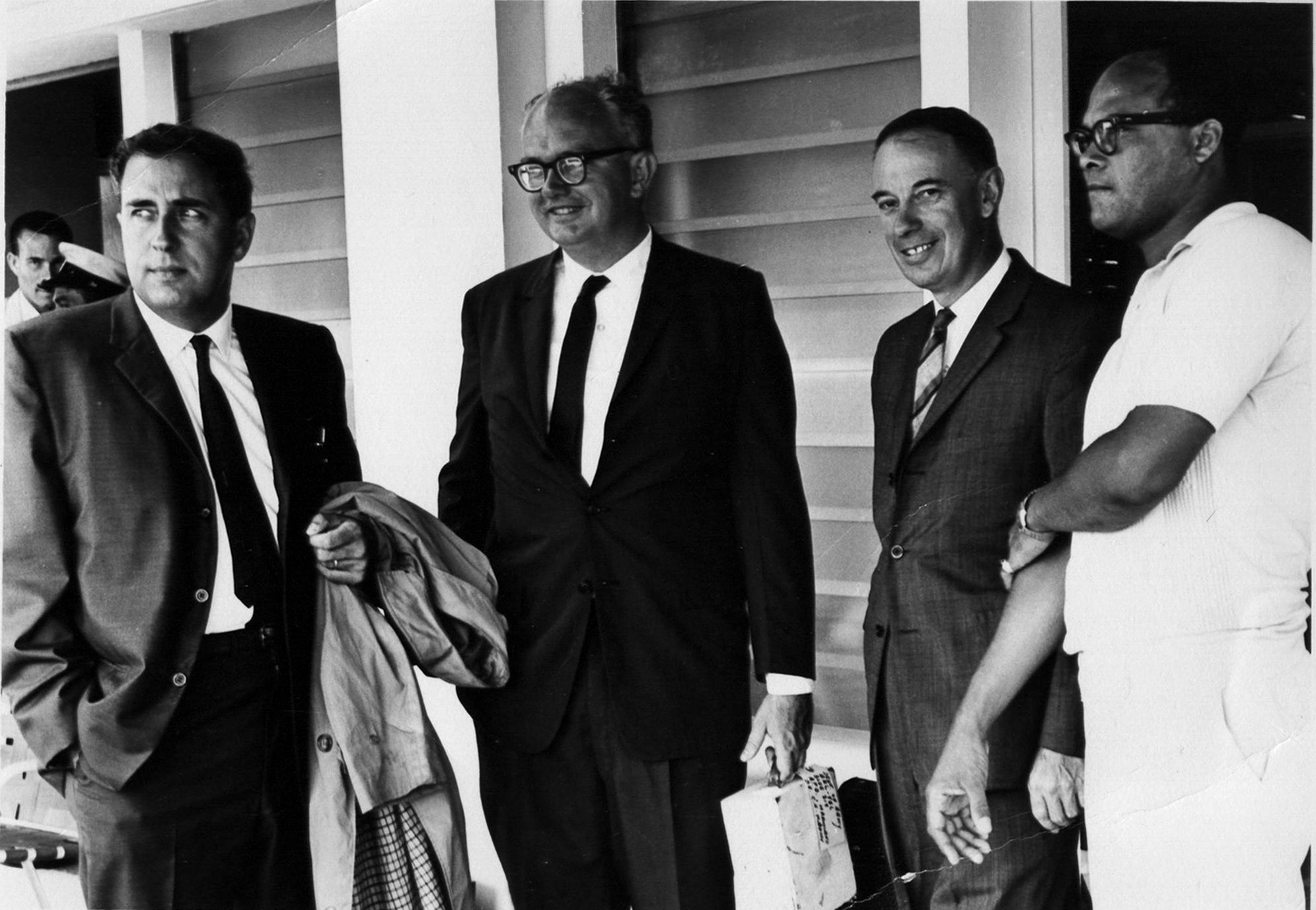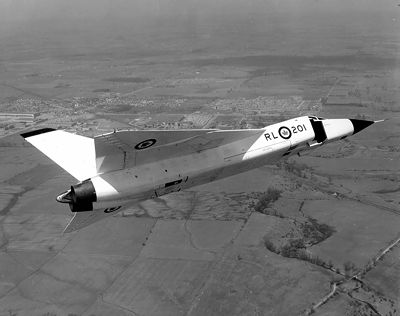Gerald Vincent Bull, engineer and ballistics expert (born 9 March 1928 in North Bay, ON; died 22 March 1990 in Brussels, Belgium). He studied at the University of Toronto’s Institute for Aerospace Studies. At the time, he was the youngest person to ever receive a PhD from the university. He was involved in some of Canada’s most advanced experimental defence projects. Later in his life, Bull was convicted of breaking an international arms embargo against apartheid South Africa. He spent his life perfecting artillery systems; some of his designs could launch payloads into space. He was assassinated during the development of a space gun for Iraq.

Early Life & Education
Although Gerald Bull was born into privilege, his young life was marred by multiple tragedies. The stock market crash of 1929 destroyed the family’s wealth and forced them to move to Toronto to find work. (See The Great Depression in Canada.) In 1931, his mother passed away. His father suffered a nervous breakdown and began drinking heavily. He eventually left his children to his sister Laura, Gerald’s aunt. In 1932, Laura died of cancer, banks foreclosed on the family home and Gerald’s father abandoned the family. The siblings were dispersed among various family members. Gerald was sent to live with his oldest sister in Sharbot Lake, Ontario.
Gerald Bull was given special permission to start high school at age 10. During the Second World War, he became fascinated with aviation and began building model airplanes. A teacher encouraged him to design his own and record how design changes would affect flight characteristics. Bull was barely into his teenage years when he discovered aerodynamics.
University and Early Career
Gerald Bull graduated high school two years early and was planning to attend medical school but was too young. However, a new program in aeronautical engineering would consider younger applicants. During an interview to determine if Bull was capable of grasping the material, he was asked why he wanted to be an aeronautical engineer. He went on to talk for fifteen minutes about his models’ wing designs and the
difficulties he had encountered. He explained that he knew what the issues were, but that he was now interested in finding solutions. He was accepted into the program.
Bull was still in university when the Second World War ended in 1945, but the war had made Canada a world leader in aviation. (See Military Aviation.)
There was still plenty of new work to do.
In 1949, the federal government financed the creation of an Institute of Aerophysics at the University of Toronto. Bull was selected to work in the institute. He was tasked with studying the aerodynamic characteristics of supersonic wind tunnels.
Bull’s experience in designing the wind tunnel brought him to the attention of the Defence Research Board, which was working on a sophisticated missile system codenamed Velvet Glove. He began working for the Canadian Armament and Research Development Establishment (CARDE) — a secretive weapons development lab at the military base in Valcartier, Quebec.
Velvet Glove and the Avro Arrow
The Velvet Glove missile project required evaluating the aerodynamic characteristics of inflight missiles. Usually, models were tested in a supersonic wind tunnel, but Valcartier didn’t have one. What Valcartier did have was an abundance of old artillery pieces and an artillery range designed to study projectiles in flight. Gerald Bull had the idea of shooting missiles from the artillery pieces. This experience proved that firing missile models out of canons was basically as effective as using wind tunnels in studying aerodynamic forces. It was also far less expensive than building a new wind tunnel.
This idea wasn’t just applicable to missiles either: it could be applied to aircraft models. Models of the Avro Arrow were fired over Lake Ontario for aerodynamic evaluation. These experiments on the Arrow models led to modifications that then allowed the Arrow to sustain supersonic flight.
HARP
While most defence analysts in the 1950s thought missiles and rockets were going to replace conventional artillery, Gerald Bull thought otherwise. His research into the aerodynamics of missiles and jet aircraft could be applied to revolutionize artillery.

He began by considering that — with enough propellant and longer barrels — artillery could be used to launch objects into space. This would become the basis for the High Altitude Research Project (HARP). By this time, Bull had left CARDE and joined McGill University, which was interested in space exploration. (See also Space Technology.) Bull theorized that a gun with a wide enough barrel could launch satellites into orbit at a fraction of the cost of conventional rockets. This research got the attention of the US Army, which helped fund the experiments. Several HARP guns were constructed, one of which was created by welding two old battleship guns together. This produced guns that were over 30 m long and weighed over 181 tonnes. Bull also developed specially designed projectiles called Martlets which were equipped with sensors designed to study the upper atmosphere. In 1966, a Martlet launched from the HARP gun reached a record for an artillery projectile of an altitude of 180 km.
DID YOU KNOW?
The Martlets projectiles were named after the mythical, legless bird that adorns the flag of McGill University.
Space Research Corporation and Criminal Conviction
Public opposition to military spending during the Vietnam War and the increasing reliability of conventional rockets led the United States and Canada to withdraw funding from HARP. Gerald Bull was allowed to keep the Highwater, Quebec testing range and all its equipment. In the late 1960s, he founded the Space Research Corporation. He put his expertise in ballistics to use, developing new artillery systems and improving the equipment of nations all over the world.
In the mid-1970s, apartheid South Africa was engaged in a war with Angola. Angolan revolutionaries, with the support of the Cuban military, were seeking to halt South Africa’s military intervention in Angola. The United Nations had made it illegal to export weapons to South Africa: Canada and the United States were signatories to the arms embargo.
An investigation by the CBC in 1978 revealed that shell casings manufactured at the Highwater plant were in fact being transported to South Africa. Criminal and civil charges were filed against Bull. It is strongly suspected, though not conclusively proven, that Gerald Bull was fulfilling contracts for the American Central Intelligence Agency. The CIA had an important role in keeping South African well-armed despite the embargo. Bull was found guilty: his company was ordered to pay a $55,000 fine in Canada while Bull was sentenced to six months in a minimum-security American prison.
Project Babylon
After leaving prison, Gerald Bull moved to Brussels where he continued developing new artillery technology. He focused on selling improvement kits to help nations upgrade their older artillery pieces. Bull would find new business partners, including China and Iraq.
Saddam Hussein’s Iraq was then fighting Iran. As a major oil producer, Iraq had incredible amounts of money to spend on the latest weapons. The country was a good customer for Bull’s products. Bull would notably help the Iraqis improve their stockpile of Scud missiles. Moreover, Iraq was interested in developing its own space program; this included funding Bull’s space cannon project, codenamed Babylon.
Bull applied the work he did on HARP to the Babylon space cannon. This time, the barrel would be much wider — a metre across — and so long that it had to be built on the side of a mountain. A total of five were to be built. The two larger designs were to be 156 m long and capable of launching a 200 kg satellite into Earth orbit.
Assassination of Gerald Bull
Though it is unlikely the space cannon was intended for military purposes, it could have been used as a weapon, albeit with limited practicality. Bull was assassinated at his Brussels apartment in March 1990. To this day, his assassins have never been found, and it remains unclear who was responsible. Both Iran and Israel had strong motivation to kill the engineer who was perfecting Iraq’s artillery arsenal. (See Engineering.) It is generally believed, though not proven conclusively, that Israel’s secret intelligence agency was responsible.

 Share on Facebook
Share on Facebook Share on X
Share on X Share by Email
Share by Email Share on Google Classroom
Share on Google Classroom


